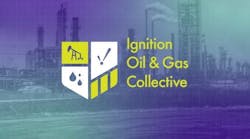The Ignition Oil and Gas Collective (IOGC) provides an outlet for the Ignition oil and gas end-user community to discuss the Ignition software and its functionality as it relates to oil and gas industrial control systems (ICS, SCADA). Members of the IOGC discuss with Inductive Automation trends and topics that are important to the industry, particularly those that accelerate the discovery of exciting possibilities that can benefit all members of the IOGC.
These topics were spotlighted during the ICC Oil and Gas Collective Session, which focused on two Ignition-fueled projects: an event-management system solution developed by Pioneer Natural Resources, and an initiative to pull Dynagraph card data into Ignition via OPC communications providers.
Here are summaries:
Event Management System—CSE ICON & Pioneer Natural Resources
Pioneer Natural Resources’ team was able to successfully migrate from a third-party software package, used for issue management, with Ignition by implementing an Event Management System solution. Built within the SCADA application, it not only provides more flexibility but also improves efficiency, according to Pioneer’s Andrew Scott, who noted that the solution allowed them to completely automate the process of connecting an alarm and all the associated metadata (in addition to alarm event info) directly with an event log within SCADA.
Further, allowing improvements by storing SCADA system metadata and event logs within the same database allowed Pioneer to generate more robust and detailed shift turnover reports.
“We wanted to centralize records control room operators while adding new functionality to our current Ignition system that would provide additional sustainability, improve overall operator efficiency and assist with future field-optimization efforts,” explained CSE-ICON’s Binh Vu, the SCADA practice lead on this project.
Vu detailed the pain points that spurred this project:
● Cumbersome log entries that sapped too much time from operators
● Alarms that were dislocated from log entries
● Manual data entries that provided room for human error
● Difficulty in developing analytics related to alarms
● Challenges with leveraging central dispatch and field-optimization technologies related to events and alarms
“The snag was a track-software problem we had been using to meet operations’ requirements,” surmised Vu. “It was also hard for users to keep track of what events happened.”
The solution? The team developed a new event-management screen that shifted focus from populating dropdowns into selecting sites. They developed the capability to tag sites with categories. They leveraged metadata to boost filtering and visualize all information from events. They created a user-friendly summary screen that proved hugely beneficial.
Automating processes reduced the number of fields that required manual entry, which also enhanced process flow.
“Ignition enables a more robust forum for data input,” said Vu. “It reduced unnecessary reports with enhanced summary screens. It eliminated the need for third-party software or to log into two systems. And it boosted efficiency with creating and maintaining logs.”
Reports are more robust and accurate. Integration of this information into other SCADA screens is simplified. And…perhaps the best part…the tool is more user-friendly than past approaches.
Dynagraph Cards in Ignition—Deep Fork Automation
This segment explored a project of pulling Dynagraph-card data into Ignition via OPC communications providers Kepware and Autosol.
Rob Warren, automation specialist with Deep Fork Automation, explained the process of collecting data from rod pumps, a common (but still tricky practice) to enable smarter maintenance practices of wells. “You determine how much weight is on the rod as it moves up and down,” he said. “And you use that to draw a picture of load vs. position.”
When entered into a controller and analyzed, operators better understand how their asset is operating, which can reduce costly failures. “That can save a company a ton of money, before we even talk about improved production.”
The presenters bemoaned the mountains of data involved in these processes—tables containing millions of rows—and the challenge, previously, in translating that information into actionable insights.
“With Ignition, everything has a tag, and we use a standardized tag structure, which is critical,” explained Warren. Data organized this way is easy to extract, easy to understand, and easy to inform smart shifts in operational strategies.

